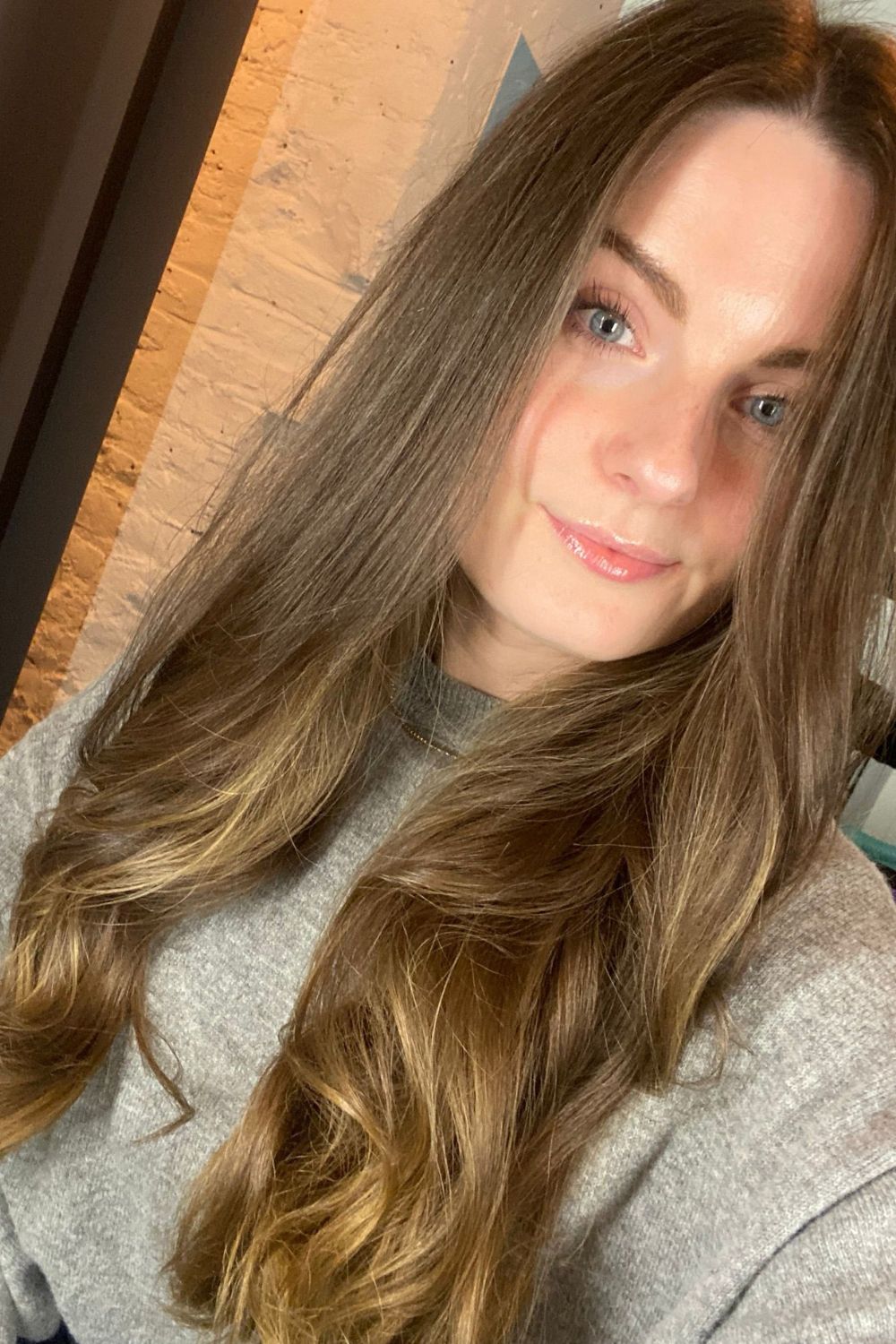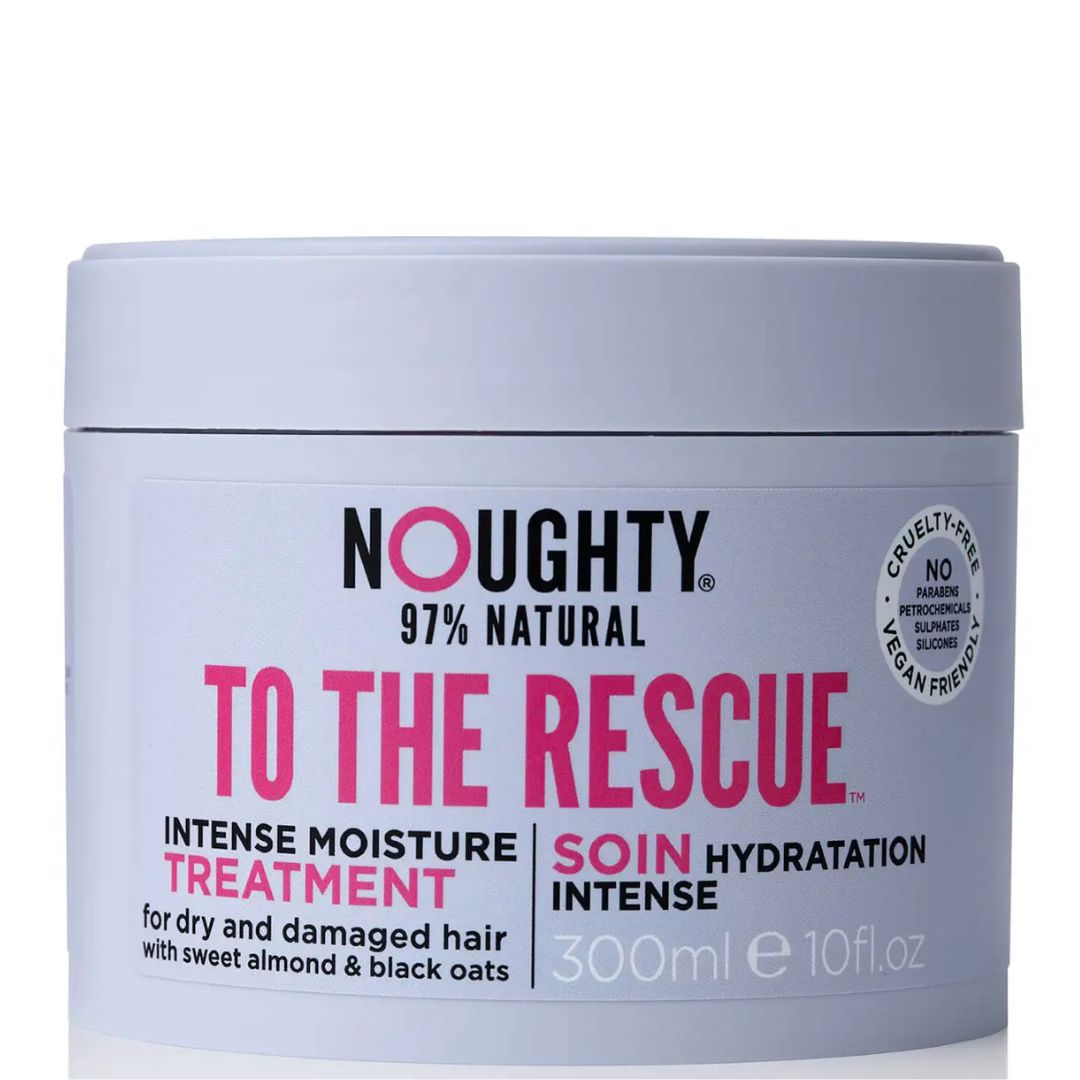Despite being a beauty editor, my ends are dry and frazzled, but this simple technique has totally transformed my hair
Yes, I saw it on TikTok

There are so many trends popping up on my FYP that, even as a beauty editor, I struggle to keep up. But there's one trend that I decided to give a whirl, and it's turned out to completely transform the condition of my hair. Enter: The Hair Sandwiching Method. A technique used in the shower that effectively cleanses the scalp while not drying out ends—no need to rely on the best dry shampoo to avoid those frazzled ends anymore.
If you spend any time on TikTok then you might have heard all about moisture sandwiches for our skin and, unsurprisingly, you get a similar result when applying the conditioner to your hair.
Here's everything you need to know about hair sandwiching and how to get the many benefits from it—straight from an expert in-the-know, John Alfred, colourist at Hershesons.
What is the hair sandwiching method?
The hair sandwiching method, also known as reverse washing, follows an order of conditioner-shampoo-conditioner. If you have dry hair or are prone to frazzled ends, this is for you. The conditioner is "acting as a barrier against the shampoo as it rinses from the scalp," say John. Plus, you get the added benefits of conditioner on the ends to combat the drying effects shampoo can have when cleansing our scalp. It keeps hair feeling as hydrated as possible whilst showering with little effort needed.
Now, like most trends in the beauty industry, we recognise that none of this is new and that many hair types and cultures have been doing this for years. We're here to celebrate the past and use learnings to fit this into our everyday lives—no matter your hair type or texture. The trick is to tailor it to your routine and hair type if you want to try it at home. Ever unsure? Ask your hairstylist.
Now, the sandwich method initially sounded so simple and valuable that I wasn't sure if it was actually making a difference; placebo is a powerful thing, my friends. But John—who I ever trust with my hair—said that there is definitely benefits to it. "I do think hair sandwiching works," says John. "It works by protecting the dry ends against the shampoo without allowing the ends of the hair to become dry and stripped by the shampoo, which is meant to cleanse an oily scalp."
What are the benefits of hair sandwiching?
Essentially, it's a great way of reducing parched ends while still minimising a greasy scalp. The main benefit is that you're protecting your hair from unnecessary shampooing on the ends and keeping them hydrated with conditioner. But you're still making sure to wash the roots really well so they don't get greasy.
Celebrity news, beauty, fashion advice, and fascinating features, delivered straight to your inbox!
My hair is fairly fine but I have a lot of it. Add to that, I'm currently growing out my cowgirl copper hair, so the ends of my hair are processed (disguised under a not-so-great semi-permanent hair gloss), therefore needing more moisture.
I find this technique injects more moisture into my ends while thoroughly cleansing my scalp. It really feels like the best of both worlds to me; ridding greasy roots yet keeping glossy, moisture-packed ends.

Who benefits from hair sandwiching the most?
When it comes to who benefits the most. The short answer is that everyone can, but John explains that it's curly and coily hair types who benefit the most because they're more prone to dryness. "[Those hair types] are more prone to dry ends and more easily damaged from heat and chemical services than straight, thicker hair," John adds. Hair types aside, "The sandwich method is particularly beneficial to those who have an oily scalp but dry ends."
Colouring and other hair services can impact the hydration levels of the hair. "Colouring when not done properly, and when using bleach, can damage and dry the ends of the hair," says John.
In fact, the sandwich method is something colourists do during a root tint. When someone has highlights or balayage and are getting a dark root tint to cover grey or deepen the natural hair colour, John uses a hair mask prior to rinsing and shampooing the colour out of the scalp. "This works to protect the ends from absorbing and grabbing onto that root colour as the pigment is rinsed through the blonde, porous ends."
How to do hair sandwiching?
This is just a general guide as to how I incorporate the hair sandwich method into my routine but you can tailor it to your hair type and preferences.
1. Hop into the shower and rinse your whole hair through—roots and ends.
2. Apply a conditioner (this can be cheaper than your typical one if you like to splurge, I'm aware this is using double the amount of conditioner so you can definitely go more affordable here, with supersized bottles to avoid waste) to just your ends and try to avoid getting them really wet straight away.
3. Apply your shampoo and work that into your scalp while the conditioner is still in the ends. I use the Percy & Reed Scalp Massager to cleanse as effectively yet gently as I can.
4. Rinse out both the shampoo and conditioner well.
5. Re-apply conditioner, I tend to use a hair mask here and leave this on for a few minutes as you normally would any conditioner. I also brush through my conditioner with a wide-tooth comb here.
6. Rinse completely.
Sure, it takes an extra few minutes, but I've found that this has really helped combat my horrible dry ends whilst still keeping my roots feeling fresh.
Just make sure that every once in a while you do give your ends a rinse with shampoo, particularly if you like to use lots of styling products. Although we are avoiding dry ends, we also don't want them overloaded with products if you're going hard on the styling products.

This stuff is so excellent at reducing dry ends without making them feel really suffocated. I use this as my second condition and find that I don't need a lot of it to completely saturate my ends.
It's also really cheap considering the amount you get in a tub so I feel like it lasts for a while.

Amika never fails when it comes to shampoo and conditioner and I'm a big fan of them all. When I want to clarify my roots without any intense detoxers but also don't want to add too much moisture to my scalp, I opt for the Normcore Signature Shampoo.
It cleanses really well without giving that stripped feeling (I know some people love this feeling but that's not me), leaves the scalp feeling comfortable but not clogged and it smells beautiful, which I hate to admit is one of the most important things for me when it comes to haircare.
Tori is a freelance beauty journalist and contributor for Marie Claire. She has written for various titles, including Allure, Glamour, Elle, Refinery29, Brides, and more. Currently training to be a nail tech, Tori is a total nail enthusiast and always has time to talk all things nail art. When she’s not writing about beauty and testing products, Tori can be found walking her rescue dog Pip, drinking great coffee, and eating as many croissants as humanly possible.